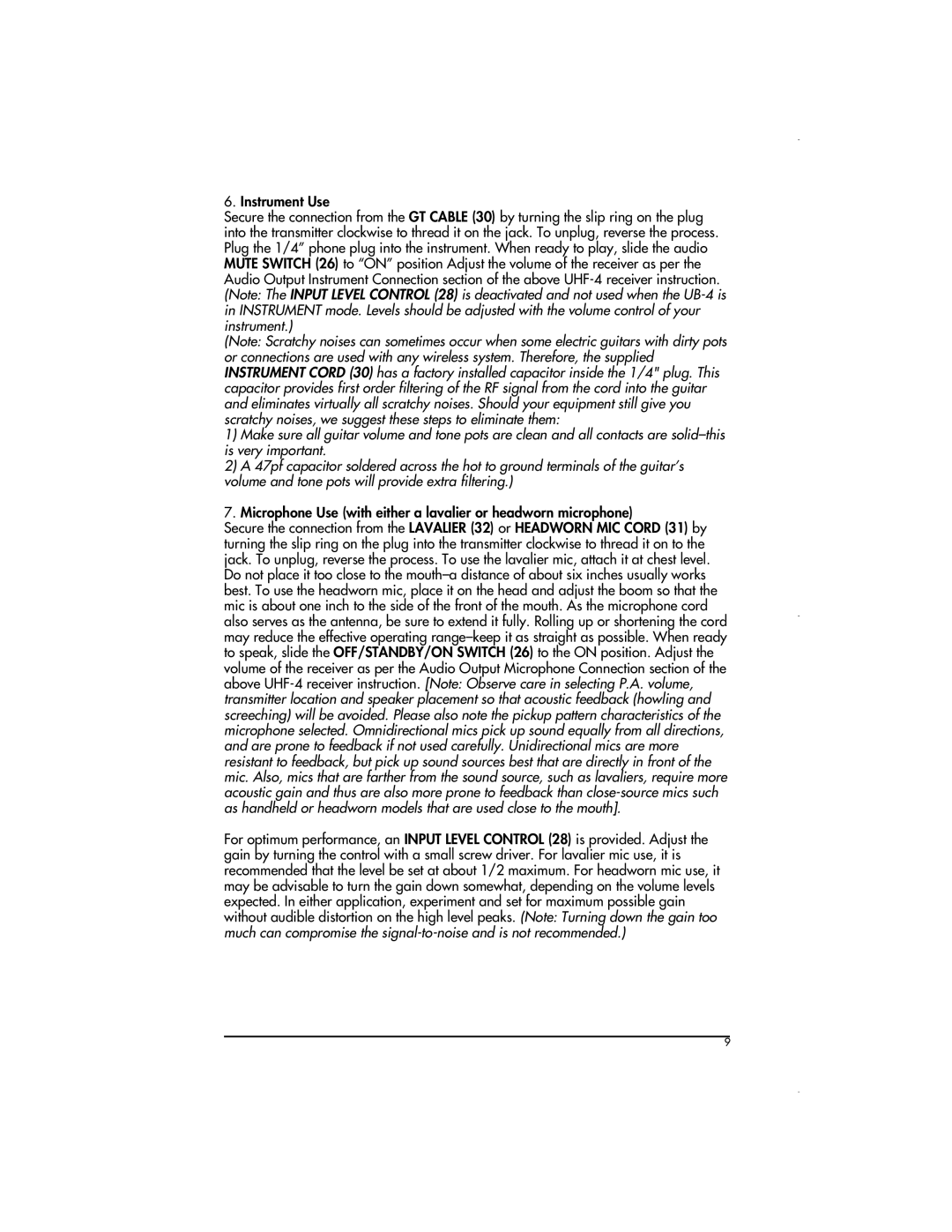UHF4LTSYS11, UHF4HTSYS16, UHF4HTSYS11, UHF4HTSYS14, UHF4LTSYS14 specifications
Nady Systems has established itself as a pioneer in the wireless audio technology industry, offering a diverse range of products that cater to musicians, audio professionals, and performers. Among their offerings, the Nady UHF Wireless Microphone Systems stand out, particularly the models UHF4LTSYS13, UHF4HTSYS15, UHF4HTSYS13, UHF4LTSYS16, and UHF4HTCH11.These systems utilize UHF (Ultra High Frequency) technology, which provides numerous advantages over traditional VHF systems. One of the primary benefits of UHF technology is the ability to operate on a wider range of frequencies, reducing the likelihood of interference and ensuring clearer audio transmission. This makes them suitable for a variety of applications, from live performances to studio recordings.
The UHF4LTSYS13 is designed for those who prefer a lavalier microphone solution. It features a lightweight and compact design, providing ease of use without sacrificing sound quality. The system operates on UHF frequencies, ensuring it captures clear audio signals even in challenging environments.
Conversely, the UHF4HTSYS15 and UHF4HTSYS13 are handheld microphone systems ideal for vocalists and presenters. These models come with dynamic handheld microphones that are engineered to deliver powerful, rich sound, making them perfect for live performances. The UHF4HTSYS15 features enhanced frequency response and transmission characteristics, allowing for optimal audio fidelity.
The UHF4LTSYS16 offers similar benefits to the UHF4LTSYS13 but boasts additional features such as extended battery life and improved range. This makes it particularly suited for long events where reliability is critical.
Lastly, the UHF4HTCH11 model is tailored for situations demanding flexibility and adaptability. It supports interchangeable microphone capsules, giving users the freedom to customize their microphone according to their specific needs.
All models feature an auto-scan function for easy setup, ensuring users can quickly find and switch to a clear frequency, minimizing disruptions. Additionally, they come equipped with a robust receiver that provides a stable signal and exceptional audio quality.
In summary, Nady Systems’ UHF4 series represents the company's commitment to quality and reliability in wireless audio transmission. With a range of options suited for various applications, these systems are an excellent choice for anyone looking to enhance their audio experience.

